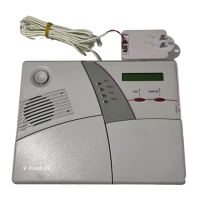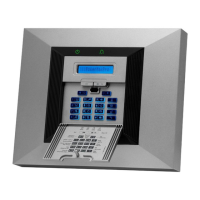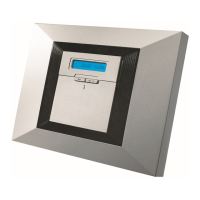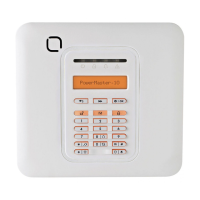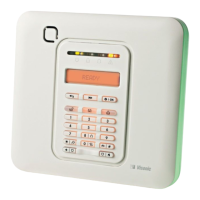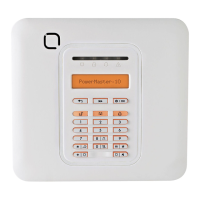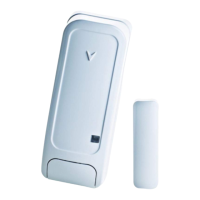SPECIAL FUNCTIONS
14 D-303974 PowerMaxExpress User's Guide
4. Special Functions
Looking after People Left at Home
An important characteristic of the PowerMaxExpress
is its ability to function in a mode contrary to the
usual behavior of an alarm system. When the system
is in the disarmed state (or even when armed
“HOME” with perimeter protection only), it can keep
track of in-house activity and will report lack of
motion in interior zones if there is no detection of
motion within predetermined time limits.
To use this characteristic, you must ask your installer
to program a specific time limit beyond which lack of
motion will be reported as a “not active” alert.
To make things clear, let us assume that an elderly, sick
or handicapped person is left unattended in a protected
site. This person, disabled or sick as he may be, will not
stay entirely still for hours. It is only natural that even
while being asleep he will turn over in his bed from time
to time. He might also wander into the kitchen to eat or
drink, or to the bathroom for other necessities. Upon
doing so, the bedroom, bathroom and kitchen motion
detectors will detect his movement.
If, for example, the “lack of motion” time limit is set by
your installer to 6 hours, a virtual 6-hour clock will
carry out a 6-hour “countdown”.
If motion is detected within the 6-hour time frame, the
countdown will restart from the beginning (the virtual
6-hour clock will be “reset”) and no alert message will
be sent out.
If no motion is detected within the 6-hour time frame in
any interior zone, the control panel will send a “not-
active” alert message to the central monitoring station
or to private telephones designated by the installer.
IMPORTANT! In addition, you may provide the person
confined to interiors with a single-button transmitter for
distress situations, see next paragraph.
Emergency Calls for Help
Suppose the disabled person discussed above has
an accident such as falling in the bathtub without
being able to get up. It might take hours before the
“No Active” alert is sent out, but he (or she) must be
assisted much sooner.
Even though the odds for such an accident are not
high, it is advisable to provide the disabled person
with a miniature, single-button pendant-type or
wristwatch-type transmitter. Pressing the button on
this transmitter will cause the PowerMaxExpress to
send an “emergency call” to the central monitoring
station or to private telephones designated by the
installer.
To make this possible, ask your installer to define
one of the 28 zones of the PowerMaxExpress as an
emergency zone.
Then, obtain one of the transmitters listed below and
link this transmitter’s ID code to the emergency zone.
Compatible distress transmitters are (see Fig. 5):
MCT-201 - pendant-type
MCT-211 - wristwatch-type
MCT-101 - pocket-type

